Removing
1. We prepare the car for operations (see "Vehicle preparation for maintenance and repair").
2. Clean off dirt with a rag and wash the outer surface of the fuel pump with white spirit or engine cleaner (unless it is planned to be replaced) and the cylinder block next to the pump mount.
Attention! When performing the following operation, fuel will flow from the hoses. Prepare two M8 bolts to plug the hose holes.
3. Using a Phillips screwdriver or an 8 mm wrench, loosen the fuel hose clamps and remove the hoses from the fuel pump fittings. We muffle the ends of the hoses with M8 bolts.
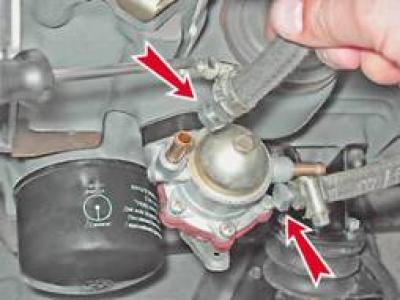
4. Using a 13 mm wrench, unscrew the two nuts securing the fuel pump to the cylinder block.
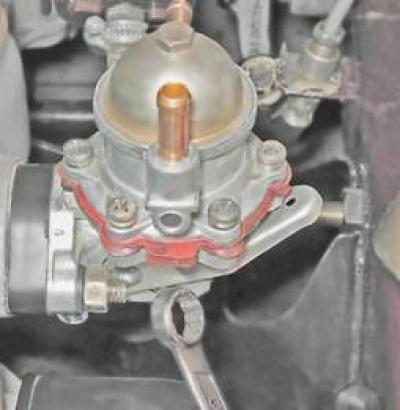
5. Remove the pump from the studs. Check the condition of the gasket and replace it if necessary. Gasket thickness - 0.3 mm.
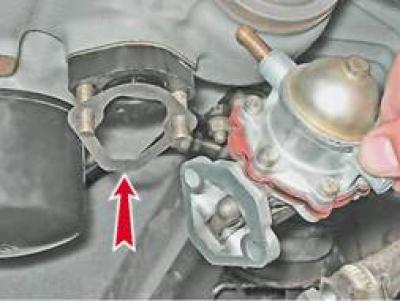
6. Remove and clean the heat-insulating spacer A from dirt. If necessary, replace the gasket B between the heat-insulating spacer and the cylinder block. Gasket thickness - 0.8 mm.
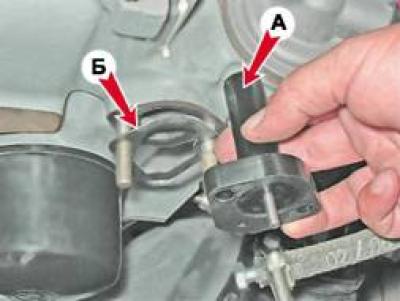
Installation
By car with high mileage (over 100 thousand km) and when replacing gaskets, before installing the fuel pump, check the value of the minimum protrusion of the pusher. The stroke and correct position of the diaphragm assembly of the pump depend on it. Otherwise, the fuel supply by the pump is reduced or there is a possibility of diaphragm rupture. The protrusion of the pusher is changed by selecting gaskets between the spacer and the cylinder block.
1. We check the value of the minimum protrusion of the pusher above the mating plane of the heat-insulating spacer, taking into account the gasket between the fuel pump and the spacer. To increase the measurement accuracy, both gaskets are temporarily installed between the spacer and the block. We set the minimum protrusion by slowly turning the engine crankshaft. We press the spacer to the block and measure the protrusion of the pusher.
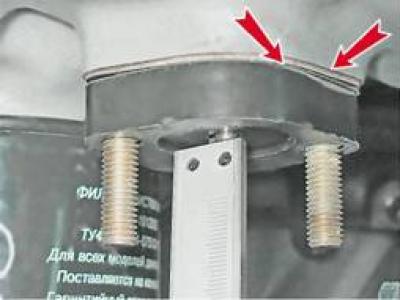
The protrusion should be in the range of 0.8-1.3 mm.
2. If the pusher protrudes by more than 1.3 mm, then we replace the gasket between the spacer and the cylinder block with a thicker one (1.25mm), if the pusher protrudes by less than 0.8 mm - to a thinner (0.3 mm).
3. Install the gasket between the fuel pump and the spacer in place.
4. Further installation of the removed parts is carried out in reverse order.
